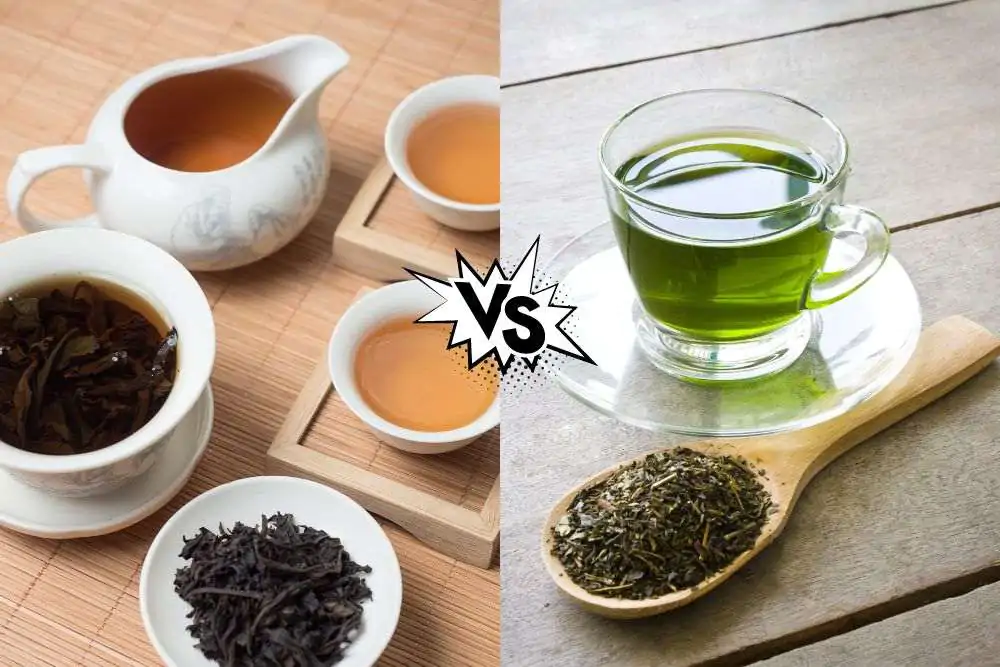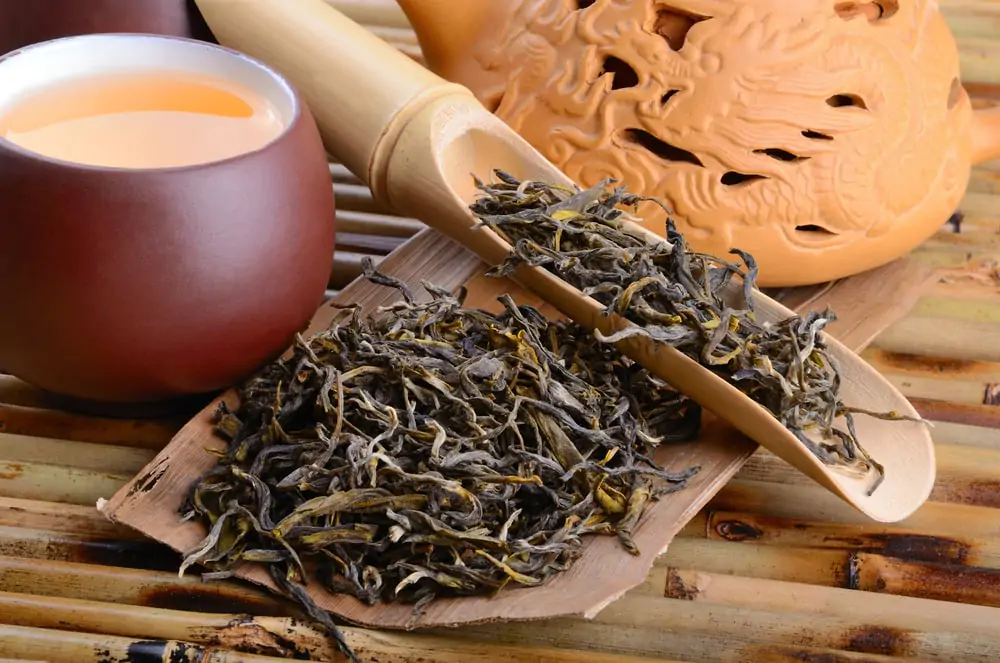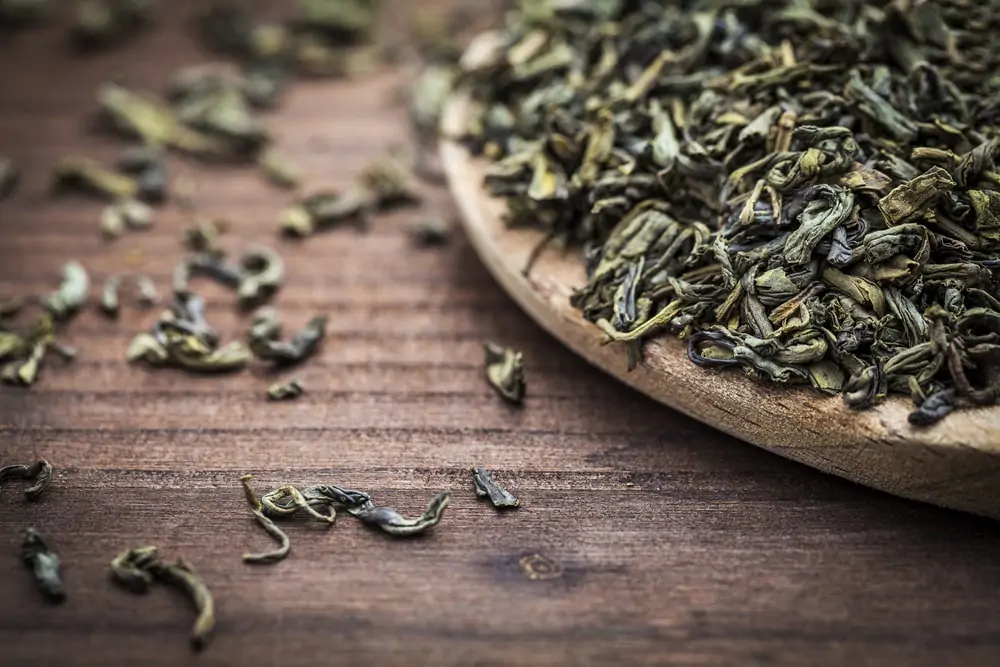There’s much debate surrounding oolong tea vs green tea. We’ve put together an article giving you the lowdown.

Some form of tea can be found in 80% of homes. However, when considering oolong tea vs green tea, which do you lean towards?
If you need help choosing what type of tea leaf or tea bag to put in your cup, read on for some useful pointers.
Oolong Tea Origins
Although its origins are Chinese and can be traced to Fujian, there are no official records with regard oolong tea and its beginnings. However, folklore points to a humble tea grower from the Qing dynasty.
Distracted by a deer one day, he forgot to process his plucked tea leaves, resulting in wilting and oxidation. Not wanting to waste the leaves, he processed them anyway, and so oolong tea was born.
The tea grower named the Chinese tea after himself: Wu Long, meaning black dragon in Mandarin.
These days, oolong tea is grown mainly in China and Taiwan. It can be expensive, particularly the Taiwanese varieties.
Green Tea Origins
Invented in China and documented extensively, green tea is also produced across Southeast Asia. It’s widely accepted that green tea dates back to 2737 BCE, but some people say it’s as far back as 3,000 years BCE.
If we go with the 2737 BCE date, it was Emperor Shennong who first discovered the beverage. During his travels, a bunch of leaves from a burning tea twig fell into his hot water when he stopped to take a break.
When the Emperor took a sip, he found the hot drink to be refreshing and wanted more.
Oolong Tea Production

Oolong, green, white, and black tea are all made from the leaves of the Camellia sinensis plant. What makes them different is how the tea leaves are processed.
Oolong tea represents about 2% of the world’s tea production, and most of it comes from southern China.
Oolong tea is made when tea leaves are left to wither and semi-oxidize in strong sunlight. Post-withering, the tea plant leaves are tossed in bamboo baskets to bruise them. By doing that, the oxidation process is kept even.
As the leaves react with the air, they begin to turn brown. Tea masters are skilled at judging when the oxidation levels are just right. At that point, the oolong tea leaves are pan-roasted.
Then, they’re twisted into long curls or small beads with a tail. Oolong tea can be packaged as loose-leaf tea or in tea bags.
You might enjoy our round-up of the best oolong tea brands.
How Is Green Tea Made?
To make Green tea, you pan fry or steam the tea leaves and then dry them. In Japan, steaming is the norm, while in China, pan-firing over large works is preferred.
These methods speed up the heating process, deactivating the enzymes that cause fermentation. There’s very limited oxidation, and freshness is preserved.
These days, the shaping of green tea leaves is done by machinery. But hand-rolling does still take place in China for high-grade leaves.
There are several types of green tea. These include Sencha (80% of all green tea) and powdered Matcha. Also, wedge-shaped Houjicha, high-quality Gyokura, and lower-quality Bancha.
Oolong Tea Taste
The percent that oolong tea oxidizes varies across different tea growers, meaning the flavor can vary somewhat too. But in general, there’s little astringency with oolong tea, and it has an intense flavor.
The profile ranges from floral and sweet to rich and smoky. The color can be anything from green or yellow to amber or red.
Remember: the greater the oxidation, the closer the taste will be to black tea; the lower the oxidation, the closer the flavor will be to green tea.
In terms of steeping time, aim for 1 to 3 minutes.
Green Tea Flavor

By contrast, green tea is lighter, with a grassy, vegetal, and mildly astringent taste. The color is green, light brown, or yellow. Steeping time is typically 1 to 5 minutes.
Green tea is usually served without sugar, milk, or lemon. Why? These destroy the true aroma and flavor.
Note: The shape of the dried tea leaves and how they open up during the brewing process impacts the flavor of the brew. So within the oolong and green tea categories, the taste varies. You might also be interested in reading about if a green tea latte has caffeine.
Oolong Tea vs Green Tea: Health Benefits
Which type of tea is healthier? It’s said that both tea types can help with an array of health problems. Let’s start with a bit of science. Both types of tea contain catechins and polyphenols.
Polyphenols are micronutrients that act as antioxidants. They’re found naturally in plant foods such as tea, herbs, and spices.
Catechins are a type of polyphenol found in tea with potent antioxidant properties. They’re made up of a compound called epigallocatechin-3-gallate (EGCG).
Oolong Tea Health Benefits
You get lower levels of catechins and polyphenols in Oolong tea than in green tea. Nevertheless, claims are still made regarding the health benefits of oolong tea. These include improved gut health, stronger bones, and better blood sugar levels.
It’s also put forward that drinking oolong tea can help manage high blood pressure.
Green Tea: Health and Wellness
Green tea is known for being high in polyphenols and catechins. For example, it’s thought to improve digestion issues and protect cells from damage by reducing the formation of free radicals.
Other health claims include enhanced brain function, help with weight loss and lower cholesterol. Plus a lower risk of heart disease and a strengthened immune system.
However, the health claims for both tea types are largely unsubstantiated by evidence.
It’s worth mentioning, too, that both oolong and green tea contain fluoride. Fluoride is a component of toothpaste and helps prevent tooth decay. However, it’s said that excessive and long-term intake via tea and other foods can cause bone problems.
Caffeine Levels
Oolong and green tea are on par in terms of caffeine content. Both are mid-range and contain around the same amount of caffeine. Oolong tea has around 37 to 55 milligrams of caffeine per 225-gram serving, and green tea has 35 to 45 milligrams.
Note: Black tea typically has the highest caffeine levels of all the teas, and white tea generally has the least. Herbal teas, on the other hand, are mainly caffeine-free.
Oolong Tea Pros and Cons
Pros
- Diverse flavor profile
- Mid caffeine content
- Potential health benefits
Cons
- Heavier flavor profile
- Can be expensive
- Less micronutrients
The Final Word on Oolong Tea vs Green Tea
Drinking tea is a popular pastime, and there are many types of tea to sample. But as with any beverage, it comes down to personal preference. Both oolong and green tea are made from the Camellia sinensis plant, but the difference between them lies in the processing.
Oolong tea (also known as black dragon tea) is semi-oxidized, whereas green tea is virtually unoxidized.
Green tea represents about 15% of total tea consumption and is growing in popularity. Oolong tea accounts for around 2% and is also increasing in followers.
Taste-wise, oolong is diverse and ranges from floral to smoky; green tea is grassy and slightly astringent.
Our Advice? Shop around, and find the specific oolong and green teas that best suit your palette.

